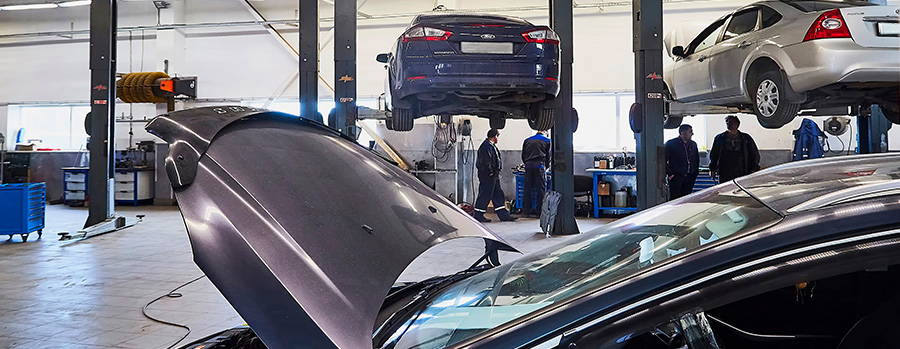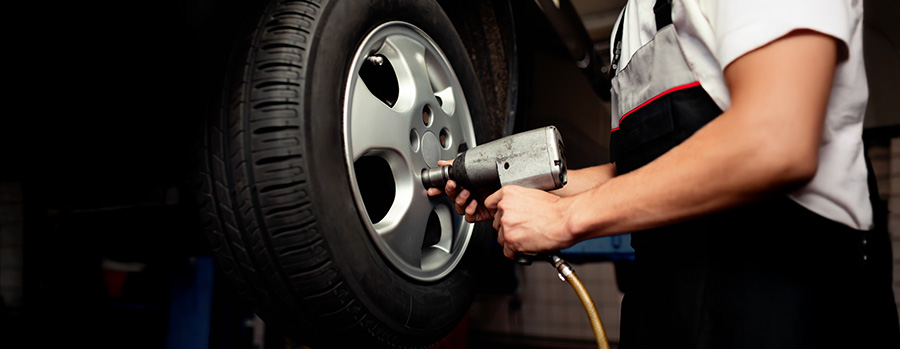Driving in Plant City means juggling quick trips around town with the occasional grind on I-4. Whether you’re dropping the kids off at school, commuting to Tampa, or just running errands, one thing remains true, your tires play a huge role in how safe and smooth your day goes.
And if your route takes you onto I-4, you already know how unpredictable it can be. Sudden slowdowns, packed lanes, and heavy traffic leave little room for error. On a road like that, worn tires are a real safety risk, and one you can easily avoid.

So how do you know when it’s time to swap your old tires for a new set? Here are five clear signs every Plant City driver should watch for:
1. Low Tread Depth
Your tires are designed with grooves that channel away water, grip asphalt, and keep you steady regardless of the weather. In Plant City, where summer rain showers can turn the roads into slick skating rinks in minutes, tread depth makes all the difference.
One of the easiest ways to check is the classic "penny test.” Grab a penny, place it head-down into your tire’s grooves, and take a look:
- If the top of Lincoln’s head is still visible, your tread is dangerously worn.
- That means your tires don’t have enough bite left to safely stop, especially if traffic suddenly slams to a halt on I-4.
Think of tread like your shoe’s grip and when it’s gone, you’ll just slide around if push comes to shove. Worn tread increases your risk of hydroplaning in the rain and lengthens your stopping distance. On a busy Plant City morning commute, where one second can mean the difference between a safe stop and a fender bender, that’s a risk you don’t want to take.
2. Uneven Wear Patterns
Take a quick look at your tires, do they look the same on both sides? If one edge seems more worn down than the other, that’s usually a red flag. Uneven wear often points to alignment or suspension problems.
Why does this matter? Because when your tires aren’t making even contact with the road, your vehicle won’t respond the way it should. Steering can feel off, your car may drift, and braking becomes less predictable.
Even worse, uneven wear cuts down the lifespan of your tires, meaning you’ll be replacing them sooner than necessary. Catching the problem early with a simple alignment check can save you money and make every drive safer.
3. Cracks, Bulges, or Cuts
Bulges and bubbles are even more serious. They usually happen when the inner layers of the tire are damaged, causing air to push outward. Think of it as a weak spot in a balloon, the more pressure you add, the closer it gets to popping. On the highway, especially at I-4 speeds, even a small bulge can lead to a dangerous blowout.
4. Frequent Air Pressure Drops
It might not feel urgent at first—after all, you can just refill the air, right? But that’s not the case. Driving on underinflated tires has real and costly consequences. When pressure is too low, your tires flex more than they should, which increases rolling resistance.
The result? Your engine works harder, burning extra fuel while the rubber wears down faster. Even more concerning is safety: low tire pressure reduces traction and braking power, especially on wet Plant City roads. And with Florida’s sudden downpours, slick pavement can turn a minor stop into a dangerous skid in seconds
5. Too Many Years on the Road
Even if the thread looks fine, age matters. Most manufacturers recommend replacing tires every 6 years regardless of mileage. Rubber naturally breaks down over time, and older tires are more likely to fail when you least expect it.

Why It Matters for Plant City Drivers
Whether you’re commuting down I-4, heading to Tampa, or just navigating local streets, safe tires are non-negotiable. A fresh set of tires means smoother rides, better fuel economy, and peace of mind in traffic that doesn’t cut you any slack.
At Jarrett Scott Ford Quick Lane® in Plant City, we make it simple to check your tires, get expert recommendations, and replace them with confidence. Stop by today, and let’s keep you rolling safely.


